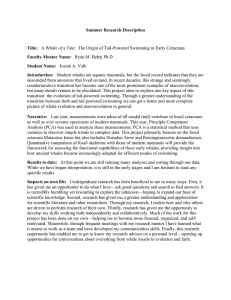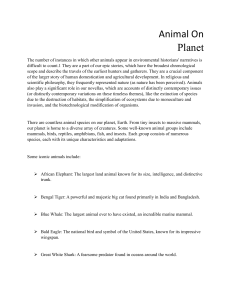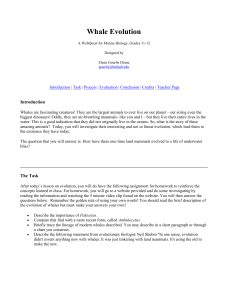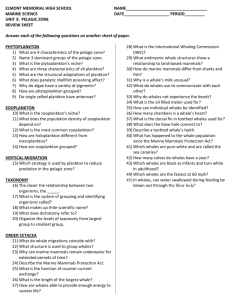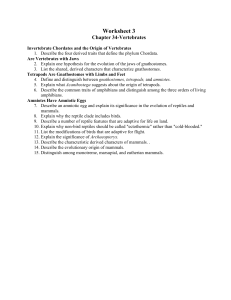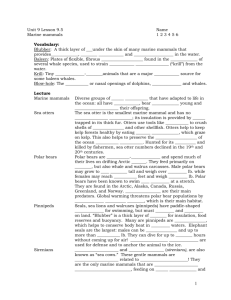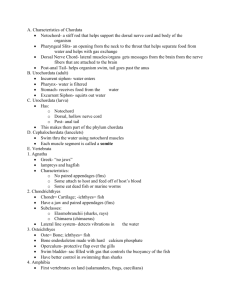PBS Evolution: Great Transformations Worksheet
advertisement
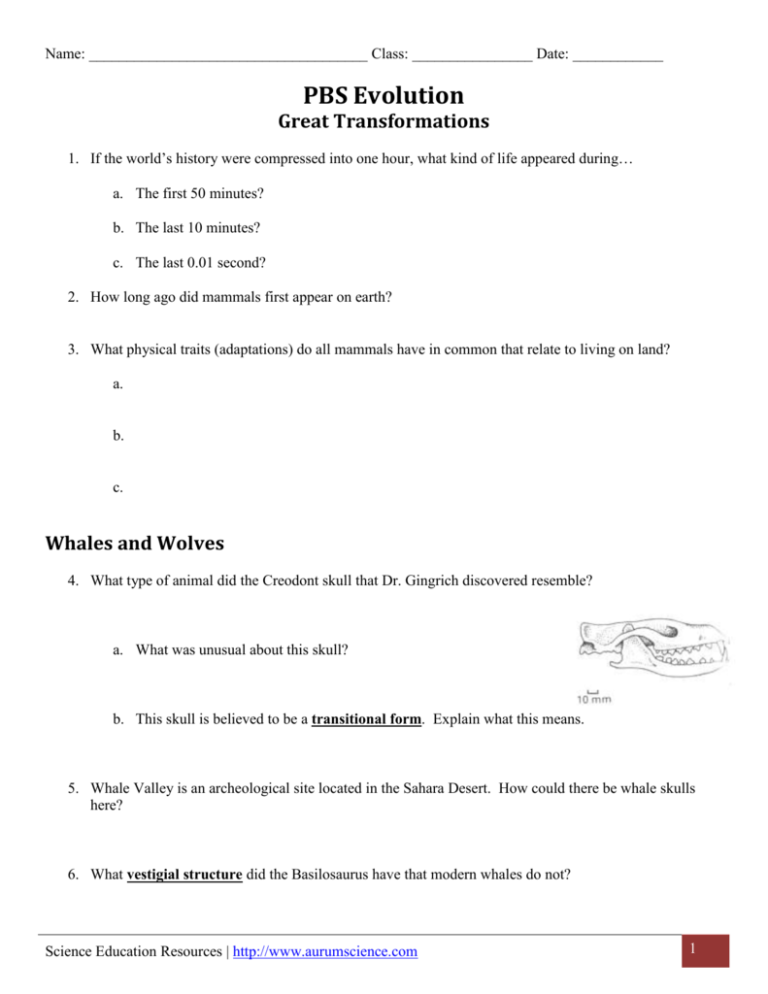
Name: _____________________________________ Class: ________________ Date: ____________ PBS Evolution Great Transformations 1. If the world’s history were compressed into one hour, what kind of life appeared during… a. The first 50 minutes? b. The last 10 minutes? c. The last 0.01 second? 2. How long ago did mammals first appear on earth? 3. What physical traits (adaptations) do all mammals have in common that relate to living on land? a. b. c. Whales and Wolves 4. What type of animal did the Creodont skull that Dr. Gingrich discovered resemble? a. What was unusual about this skull? b. This skull is believed to be a transitional form. Explain what this means. 5. Whale Valley is an archeological site located in the Sahara Desert. How could there be whale skulls here? 6. What vestigial structure did the Basilosaurus have that modern whales do not? Science Education Resources | http://www.aurumscience.com 1 Name: _____________________________________ Class: ________________ Date: ____________ 7. Describe the theory of transformation from the Sinonyx, a wolflike ancestor, to whale. 8. A major pieces of evidence behind this hypothesis of transformation is the mechanism of movement. a. Describe how fish swim: b. Describe how otters swim: c. Describe how whales swim: d. Describe how land mammals run: From Water to Land 9. All land mammals are classified as tetrapods. What does this mean? 10. Why did the paleontologists search for tetrapod fossils in Pennsylvania? a. What unusual feature did they find at the end of the early tetrapods’ limbs? b. What is this evidence of? 11. How do the bones of the early tetrapod fish, such as Acanthostega, resemble ours? Science Education Resources | http://www.aurumscience.com 2 Name: _____________________________________ Class: ________________ Date: ____________ 12. The early ancestors of fish had many unique adaptations to aid their survival. Describe one: 13. What advantage did the first limbs with digits provide? 14. What is the “Cambrian Explosion”? 15. What are trilobites? a. Who are their descendants? 16. What makes the fossils of the Burgess Shale so important in studying evolution? 17. One of the fossilized organisms discovered in the Burgess Shale, called pikaia, is believed to be one of the earliest ancestors of all vertebrate animals. Why? Genes, DNA, and Evolution 18. How do all embryos start out? 19. A scientist, Dr. Bateman, was studying the similar segmentation patterns of animals. What mutations did he observe that related to these segmentation patterns? 20. How do these segmentation patterns relate to DNA? 21. How could mutations be purposely caused with fruit flies? Science Education Resources | http://www.aurumscience.com 3 Name: _____________________________________ Class: ________________ Date: ____________ 22. What does the antennapedia gene control? What happens if it misfires? 23. When the mouse “eyeless” gene was implanted into the fruit flies, what happened? What implications does this have for the study of evolution? Bipedalism and Quadrupedalism 24. Lemurs are considered a living analogue to ancient primates, because they move in multiple ways. Describe the three different types of movements shown. a. b. c. 25. What primate is the closest living relative to humans? 26. There are two main pieces of evidence that establish this close relationship. List them. a. b. 27. What type of movement do chimpanzees rely on that humans do not? 28. Use this table to compare the skeletal differences between humans and chimpanzees. Humans Chimpanzees Spinal column Pelvis Position of the knees Science Education Resources | http://www.aurumscience.com 4
